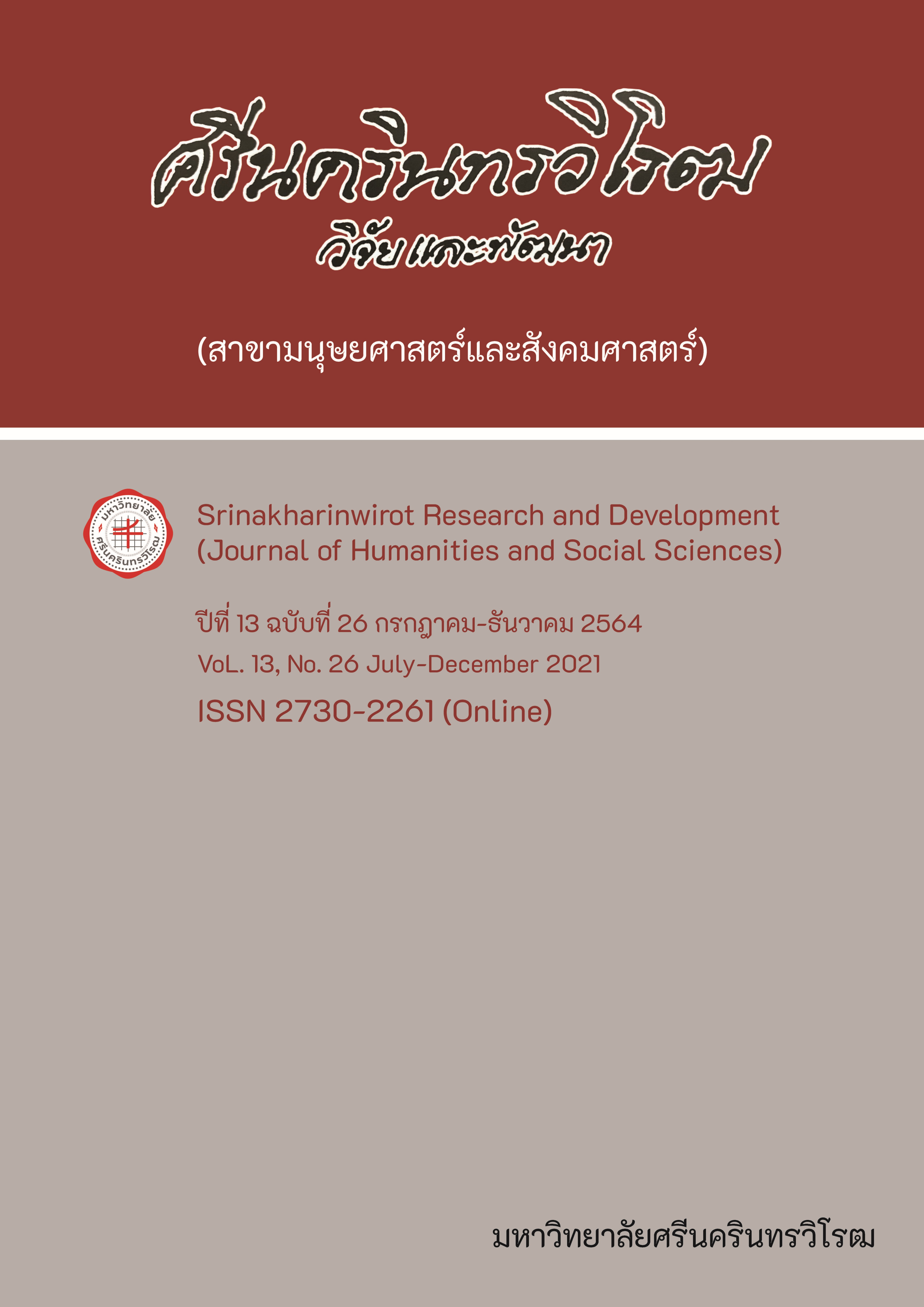THE FACTORS AFFECTING HOUSEHOLD ELECTRICITY EXPENSE IN THAILAND A CASE STUDY OF GENDER ISSUE
Keywords:
Household Electricity Expense, Gender DifferenceAbstract
This study had two objectives which were to compare the household electricity expense and to find out the factors affecting the household electricity expense in case of the gender differences. Quantitative method was applied to this study combined with the secondary data from “2006, 2011 and 2017 Household Socio-economic Survey” complied by the National Statistic Office was adopted to this Study. Descriptive and Multiple Regression analysis were employed to analyses the differences and factors association to the household electricity expense. Monthly household electricity expense was the dependent variable and the independent variables were gender age groups and level of education of household head, and household characteristics which including number of family member household income number of room type of residences and number of appliances were taken into account. There were several econometric models to test in particular year of study. Results showed that the household with male household head had lower the electricity expense than those who had a female household head when other thing being equally. This means that the Thai Energy authorities should emphasized “Female” being a target group of the energy saving campaign to stimulating female behavior to reduce their electricity consumption.
Downloads
References
Mamita Dash. (2015). An economic analysis of household energy consumption of urban Odisha. International Journal of Science and Research (IJSR), 4, (7).
Melek Yalcintas, & Abidin Kaya. (2017). Roles of income, price and household size on residential electricity consumption: Comparison of Hawaii with similar climate zone states. Energy Reports, 3, 109-118.
Rory V, Jones, & Kevin J. Lomas. (2015). Determinants of high electricity energy demand in UK homes: Socio-economics and dwelling characteristics. Energy and Building, 101, 24-34.
Rory V, Jones, Alba Fuertes, & Kevin J. Lomas. (2015). The socio-economic, dwelling and appliance related factor affecting electricity consumption in domestic building. Renewable and Sustainable Energy Reviews, 43, 901-917.
Dirk Brounen, Nils Kok, & John M. Quigly. (2012). Residential energy use and conservation: Economics and demographics. European Economic Review, 56, 931-945.
Parisa Esmaeilimonakher, Tania Urmee, Trevor Pryor, & Garry Baverstock. (2016). Identifying the determinants of residential electricity consumption for social housing in Perth, Western Australia. Energy and Buildings, 133, 403-413.
จารุพัสตร์ พิชิตานนท์. (2549). ค่าใช้จ่ายด้านพลังงานของครัวเรือนไทย. วิทยานิพนธ์ปริญญามหาบัณฑิต คณะเศรษฐศาสตร์ บัณฑิตวิทยาลัย จุฬาลงกรณ์มหาวิทยาลัย.
รัชพันธุ์ เชยจิตร, และรติพร ถึงฝั่ง. (2557). การศึกษาค่าใช้จ่ายพลังงานของครัวเรือนยากจนในประเทศไทย. วารสารพัฒนาสังคม, 16, 47-64.
Ratchapan Choiejit, & Ratiporn Teungfung. (2014, January-June). Energy Consumption of Thai Elderly Households. Economics and Public policy Journal, 5(9), 1-15.
Eimear Leahy, & Sean Lyons. (2010). Energy use and appliance ownership in Ireland. Energy Policy, 38, 4265-4279.
Yohanis YG, Mondol JD, Wright A, & Norton B. (2008). Real-life energy use in the UK: how occupancy and dwelling characyeristics affect domestic electricity use. Energy and Building, 40(6), 1053-1059.
Shaojie Zhou, & Fei Teng. (2013). Estimating of urban residential electricity demand in China using household survey data. Energy Policy, 61, 394-402.
Gesche M. Huebner, Ian Hamilton, Zaid Chalbi, David Shipworth, & Tadj Oreszczyn. (2015). Explaining domestic energy consumption-The comparative contribution of building factors, socio-demographics, behaviors and attitudes. Applied Energy, 159, 589-600.
Gesche M. Huebner, David Shipworth, Ian Hamilton, Ziad Chakabi, & Tadj Oreszczyn. (2016). Understanding electricity consumption : A comparative contribution of building factors, socio-demographics, appliances, behaviors and attitudes. Applied Energy, pp. 692-702.
Merve Bedir, Evert Hasselaar, & Laure Itard. (2013). Determinants of electricity consumption in Dutch dwellings. Energy and Buildings, 58, 194-207.
Thomas F. Sanquist, Heather Orr, Bin Shui, & Alvah C. Bittner. (2012). Lifestyle factors in U.S. residential electricity consumption. Energy Policy, 42, 354-364.
Wyatt P. (2013). A dwelling-level investigation into the physical and socio-economic driver of domestic energy consumption in England. Energy Policy, 60, 540-549.
Daniel Wiesmann, Ines Lima Azevedo, Paulo Ferrao, & John E. Fernandez. (2011). Residential electricity consumption in Portugal: Finding from top-down and bottom-up models. Energy Policy, 39, 2772-2779.
Fintan McLoughlin, Aidan Duffy, & Michael Conlon. (2012). Characterizing domestic electricity consumption patterns by dwelling and occupant socio-economic variables: An Irish case study. Energy and Buildings, 48, 240-248.
Hidetoshi Nakagami, Chiharu Murakoshi, & Yumiko Iwafune. (2008). International Comparison of Household Energy Consumption and its Indicator. 2008 ACEEE Summer Study Proceedings. pp. 214-224.
Downloads
Published
How to Cite
Issue
Section
License
Srinakharinwirot Research and Development Journal of Humanities and Social Sciences is licensed Under a Creative Commons Attribution-NonCommercial-NoDerivs 4.0 International (CC-BY-NC-ND 4.0) License, Unless Otherwise Stated. Please Read Journal Policies Page for More Information on Open Access, Copyright and Permissions.



